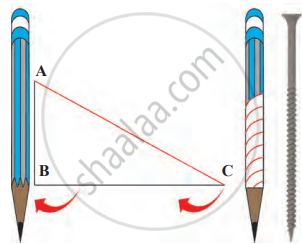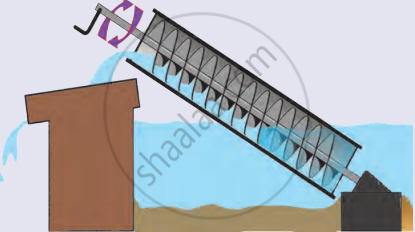Topics
Matter
Physical Quantities and Measurement
- Measurements
- Unit and Its Types
- Unit Systems
- Physical Quantities
- Rules and Conventions for Writing SI Units and Their Symbols
- International System of Units (Si System)
- Unit Prefixes
- Measurement of Length
- Devices for Measuring Length
- Measurement of Mass
- Devices for Measuring Mass
- Measurement of Time
- Devices for Measuring Time
- The Temperature and a Thermometer
- Measuring Temperature
- Area and It’s Unit
- Measurement of Area
Force
- Force - Push or Pull
- Effect of Force
- Types of Force: Contact Force
- Types of Force: Non-Contact Force
- Force of Friction
- Effects of Friction
- Kinds of Friction
- Advantages and Disadvantage of Friction
- Increasing and Reducing Friction
Energy
- Concept of Work
- Energy
- Machines
- Principle of Machine
- Efficiency of a Machine
- Simple Machines
- Mechanical Advantage
- A Lever
- Types of Levers
- A Pulley
- A Wheel and Axle
- An Inclined Plane
- A Wedge
- Screw
- Care of Machines
- Machines (Numerical)
Light
Magnetism
- Discovery of Magnets
- Classification of Magnets
- Magnetic and Non-magnetic Materials
- Magnet
- Magnetic Properties
- Magnetic Field
- Earth’s Magnetism
- Making a Magnet
- Electromagnet
- Making of an Electromagnet
- Applications of Electromagnets
- Care and Storage of Magnets
- Demagnetization of a Magnet
- Introduction
- Experiment
- Archimedes' Screw
Introduction:
An inclined plane is a flat surface that is slanted or tilted, like a ramp. It helps us move heavy objects from a lower place to a higher place with less effort.
For example, if a slanting plank is used to lift a weight, we have to bear less of the weight and lifting it becomes easier. Such a plank is called an ‘inclined plane’. The more gradual the slope, the less is the weight we bear. But such an inclined plane is longer. The steeper the slope, the shorter the inclined plane. But we have to bear a greater weight.

Loading a drum onto a truck
Experiment:
1. Aim: The objective of this experiment is to understand how an inclined plane works and how it relates to the structure of a screw. We will also see how a winding road up a mountain is similar to an inclined plane.
2. Requirements: a triangular piece of paper (cut out), a pencil, and a red pen or marker.
3. Procedure
- Prepare the Triangle: Cut out a triangular piece of paper with the points labelled A, B, and C. Make sure the side AC is slanted (inclined). Use a red pen or marker to draw a line along the edge AC, which is the inclined side of the triangle.
- Wrap the Triangle: Take the triangular piece of paper and start rolling it around the pencil, beginning from point A. Roll it until the whole triangle is wrapped around the pencil.
- Observe the Shape: As the triangle is rolled around the pencil, you will notice that the red line (side AC) forms a spiral, similar to the threads of a screw.
4. Conclusion
- The red line on the triangular paper, which represents the inclined plane, turns into a spiral when wrapped around the pencil. This is similar to how the threads on a screw are designed. A screw is essentially an inclined plane wrapped around a cylinder.
- When we turn a screw into wood, the spiral thread allows it to go in smoothly, requiring less force than hammering a nail directly. This is because the screw uses the same principle as an inclined plane, making it easier to drive in.
- Similarly, a winding road or ghat on a mountain works the same way. Instead of going straight up, which would be very difficult for vehicles, the road wraps around the mountain in a gradual incline, allowing heavy vehicles to move up and down with less effort.

The screw as an inclined plane

Ghat
Archimedes' Screw:
The Archimedes' screw is a machine invented by the famous Greek scientist Archimedes. It was used to lift water easily from one place to another.
- The machine consists of a round pipe with a rod or spiral inside it.
- The pipe is placed at an angle (around 45 degrees), with one end in the water and the other end on a flat surface.
- As the rod inside the pipe is turned or rotated, water moves up through the pipe and is lifted from a lower level to a higher level.
The Archimedes' screw made it easier to lift water without using much effort. It was used on ships to remove water from the hold (the lower part of the ship) and also to irrigate fields by lifting water from rivers or lakes.

Archimedes’ screw
